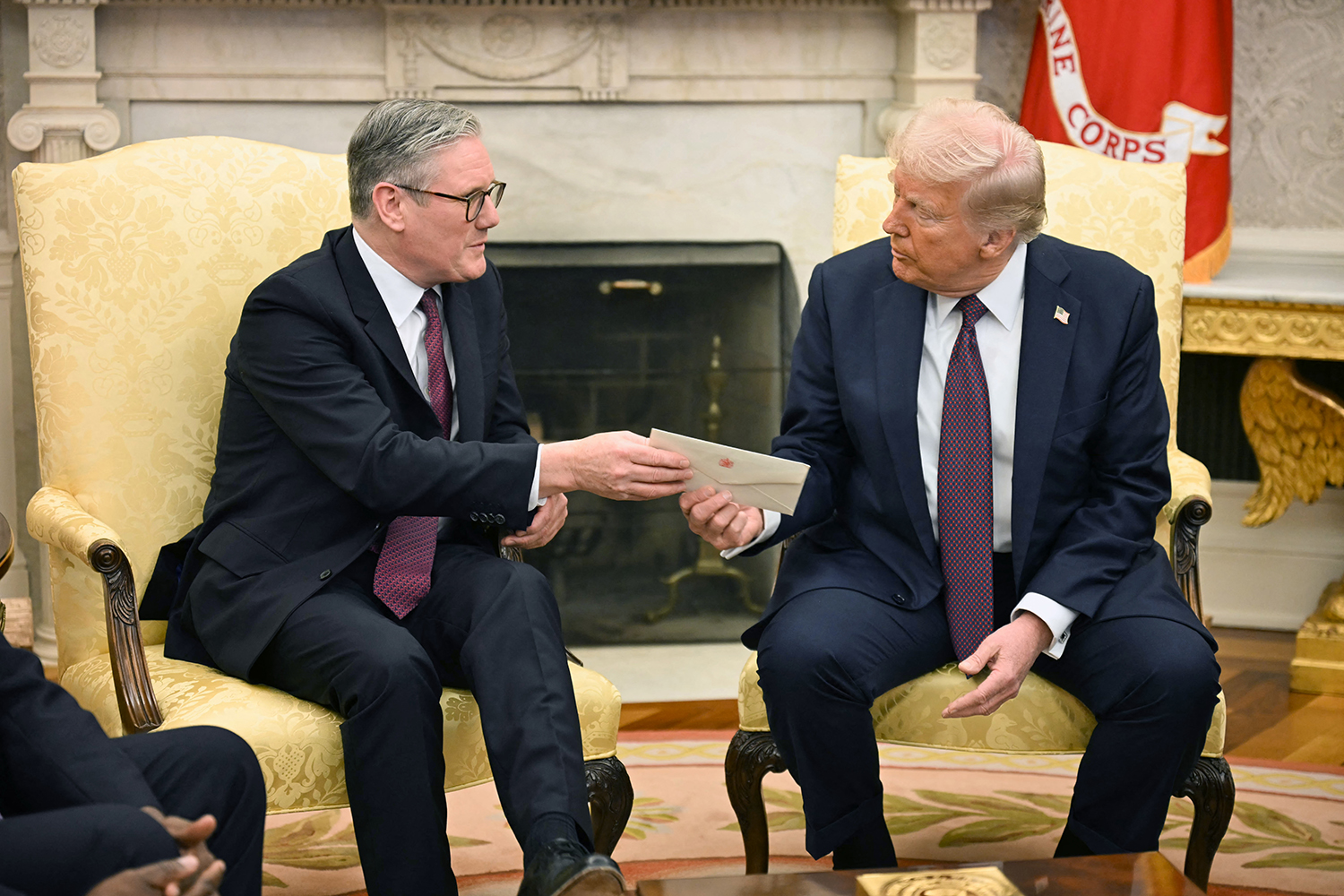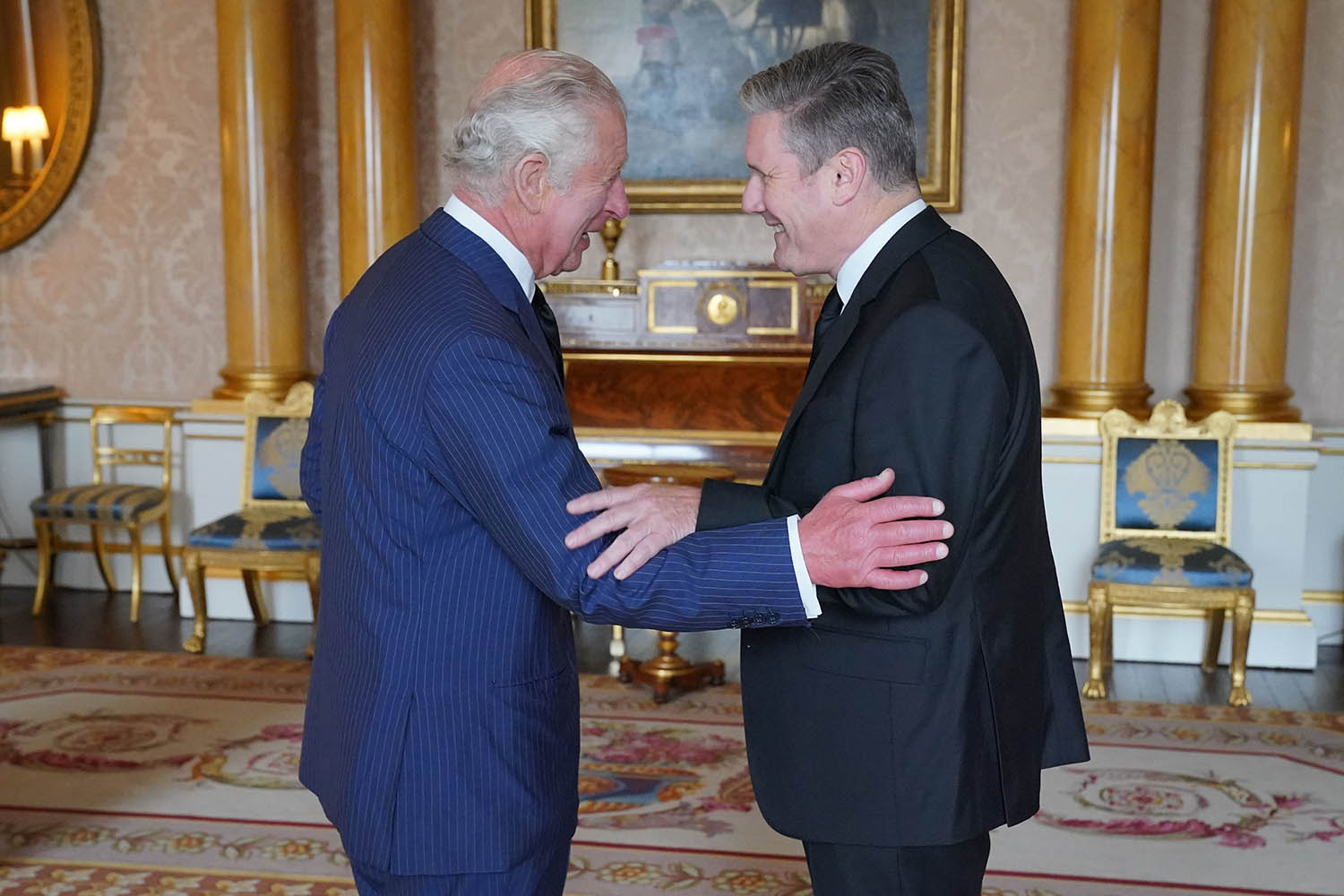It was just over 100 years ago that a British sovereign first faced the challenge of forging a relationship with a Labour prime minister, and on paper the omens did not look good.
At the beginning of 1924, King George V was deeply concerned about the prospect of a Labour government, and had been particularly perturbed by the singing of The Red Flag at the party’s election victory rally at the Albert Hall. But when Ramsay MacDonald went to Buckingham Palace to be appointed prime minister, the king went out of his way to make him feel welcome (“most friendly” was MacDonald’s verdict). In turn, George was highly impressed with MacDonald, and would later say that he was the prime minister he had liked the most.
Now, a century later, King Charles III has spent the last year getting to know his first Labour prime minister. Charles might have been forgiven for being wary of Keir Starmer: royals may no longer be worried by the Labour faithful singing The Red Flag, but the king would have been aware that the new PM was a man who in his younger, more radical days used to propose the abolition of the monarchy.
But Starmer, like Charles himself, has mellowed, and the two of them have built up a rapport that is founded on personal warmth and mutual strategic expediency. In short, they like each other, and find each other useful – so much so, indeed, that one political historian privately described Charles as “the 23rd member of Starmer’s Cabinet”.
The royal family has long been used to exercise soft power on behalf of the government. State visits are part of the Foreign Office’s diplomatic armoury. And sometimes it involves the royal family showing hospitality to leaders they would otherwise regard as being beyond the pale, as the queen had to do in 1978 with the Romanian dictator Nicolae Ceaușescu, all for the sake of an aviation deal the government wanted to secure.
But never was the monarchy deployed so blatantly in Britain’s interests as when, in that awkward piece of theatre in the White House in February, Starmer produced from his pocket a letter from the king inviting Donald Trump for a second state visit. Trump, who has a high regard for the royal family, was delighted, as they all knew he would be.
Although invitations for state visits are made by the sovereign, they are done so on the advice of the prime minister. Charles, however, was not being forced to do anything against his will. He recognises the importance of what he is being asked to do, and after decades of being accused of being a meddlesome prince, he is at pains to avoid accusations of being a political king. If the government wants him to play host to Trump, that is what he will do.
Two things made this invitation out of the ordinary, however. One was the self-conscious drama of Starmer flourishing the letter of invitation in the Oval Office. It is safe to say that would not have happened when the late Queen Elizabeth was on the throne.

Starmer did not actually plan to issue the invitation quite so publicly. “He was planning to give it privately to Trump prior to the meeting in the Oval Office,” said a government official. However, the member of staff with the letter was not able to give it to Starmer in time, which meant he lost his moment. As he did not want the meeting with Trump to go ahead without the invitation being issued, because it was going to create such a positive atmosphere, he felt obliged to do it in front of the cameras.
The other is that it makes Trump the first president – as opposed to monarch – from any country ever to have been invited for a second state visit. Charles might have raised an eyebrow at that, but he does not seem to have raised any serious objections.
It is, perhaps, significant that Jonathan Powell, the national security adviser who was a key player in preparing for the White House visit, knows Charles’s private secretary, Sir Clive Alderton, very well: it is easier to secure a strong bond between principals if their closest advisers get on well too.
And the king’s willingness to play the gracious host to Trump does not mean he cannot also stand up to him. When he visits Canada on Monday, Charles will, according to the country’s high commissioner, reinforce the message that “Canada is not for sale”.
Sir Anthony Seldon, who has written books about every prime minister from John Major to Liz Truss, argues that Charles is following in the tradition of sovereigns “bending over backwards” to welcome Labour prime ministers.
George V was the first, extending the hand of friendship to MacDonald even though he was an out-and-out Tory, while George VI – who formed a strong bond with Winston Churchill during the second world war and was appalled when he lost the 1945 election – went on to have a good relationship with Clement Attlee, even though they were politically poles apart. Queen Elizabeth got on famously well with Harold Wilson.
Seldon says that although there is much in theory that divides the king and his prime minister, including Starmer’s atheism and former republican views, “they have many similarities in their philosophical outlook on life. They are both deeply concerned about urban poverty. They are both deeply concerned about social cohesion.”
Over the years, Charles has been less scrupulous than his mother in keeping his political opinions to himself. In the 1980s he gave a private briefing to The Economist in which he expressed views strongly aligned with the then-rising Social Democratic Party.
‘It is very clear that they are both useful to each other. They like each other, but there is also a lot of identity of interest’
Sir Anthony Seldon, author
Tom Baldwin, Starmer’s biographer, says there seems to be warmth and respect in their relationship. “Keir is far too proper to tell the likes of me what they talk about, but the impression I get is that they get on really well. I think he’s impressed by the way Charles has adapted to being king.”
Buckingham Palace is playing a careful game on this. Yes, say insiders, the king has a warm personal and professional relationship with Starmer. But the same was also true of his relationship with Rishi Sunak, they say, and would no doubt be the same of the next prime minister, whatever their political hue.
It is clear, however, that Starmer and the king have found a connection. Their weekly audiences took on a particular significance when the two of them continued to meet in person at the time when the king was not carrying out public duties because of his cancer treatment. No one, not even their closest aides, knows what is said in those audiences. But Sir Vernon Bogdanor, professor of government at King’s College London and author of The Monarchy and the Constitution, suggested that Charles might have an advantage.
“The king has seen Cabinet papers for many years – and has known all the leading political actors here and abroad for many years. He might say to the PM, ‘The idea you have just mentioned was tried out many years ago before you came on the political scene. It did not work out very well then. Are you sure it would work now?’ He cannot, of course, decide policy. But he might influence the PM’s decisions.”
The pair appear to have a genuine interest in what the other is doing. When Starmer (and Angela Rayner) joined Charles for a rare joint visit to his sustainable housing project at Nansledan in Cornwall, it was the result of a conversation between the PM and the king. “[The prime minister] was talking about housing being a priority,” said a palace source. “The king … said ‘I’ve got this place down in Nansledan that I helped to establish … I would be very happy to show you around.’”
Starmer’s first weekend at Balmoral last September seemed to go well. “The mood music was extremely good,” said one source. Starmer’s wife, Victoria, was particularly appreciative of the efforts made to make her feel welcome.
But according to Seldon, there is also a level of calculation in their relationship. “It is very clear that they are both useful to each other. They like each other, but there is also a lot of identity of interest. When was a monarch last as useful to a prime minister as Charles is now, in this very turbulent world? They have come together at a time of significant diplomatic, military and economic threat to Britain.”
Starmer and the king are trying hard to make it work. Having spent the last year or so writing a book about the relationships between British sovereigns and their prime ministers, I know all too well how important that is. The close relationship between George VI and Churchill played a significant part in the history of the second world war. Conversely, Margaret Thatcher worried that reports of a rift between her and the queen would cost her votes. I also know, having studied Charles at close hand for the best part of two decades, how anxious he is not to make any mistakes that could cost him his reputation as a constitutional monarch. Whether he gets it right could affect the whole future of the monarchy.
There have been significant moments in recent years of the sovereign working in support of the government on the international stage. The queen’s 2011 visit to Dublin, which helped heal relations between Britain and Ireland, was one: the king’s support for the signing of the Windsor Framework was another. But, says Seldon, what is happening with Starmer and the king is in a different league.
“When history is written people will see this not as just an average relationship between Downing Street and the palace, but an intricate interplay the like of which we never saw under Elizabeth – an activist monarch playing a significant role in British diplomatic interest as an asset for the prime minister, and the palace happily going along with it.”
Power and the Palace: The Inside Story of the Monarchy and 10 Downing Street by Valentine Low is published by Headline Press on 11 September
Photographs by Jonathan Brady/Getty and Jim Watson/AFP
